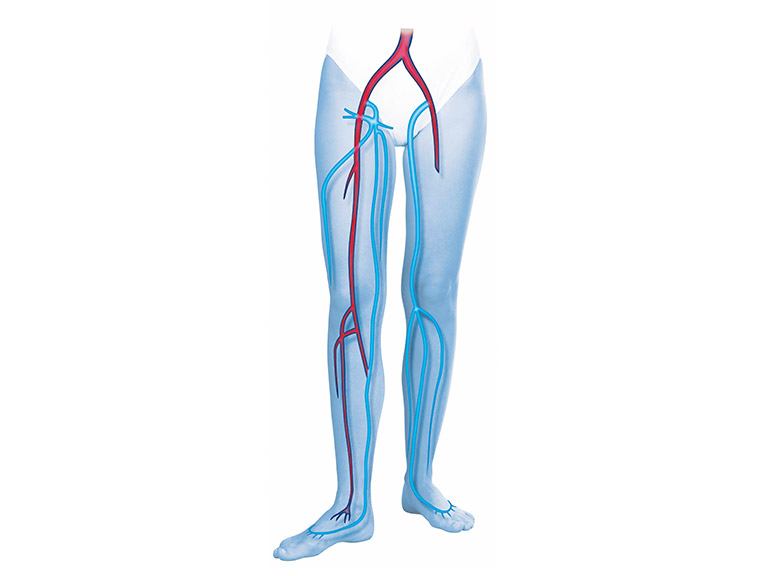

Chronic venous insufficiency (CVI) is best described as the inability of the valves in someone’s veins to properly transport blood back to the heart. The condition is fairly common, but can lead to health problems if allowed to progress in severity. Common effects include skin discoloration, swelling, and pain in the legs and feet. When chronic venous insufficiency occurs, it is because there is a problem with the valves and consequently blood is flowing backward. This means that blood will begin to pool in the veins, generally in the legs and feet.
Leading phlebologists developed the C.E.A.P. classification in order to standardize diagnosis and judge the outcomes of venous insufficiency. This classification spans six stages (C0-C6), which map the progressing severity of chronic venous disease . Chronic venous disease refers to the early stages (C0-C3), while chronic venous insufficiency specifically refers to the later and more severe stages (C3-C6).
C0: no visible or palpable signs of venous disease
C1: telangiectasies or reticular veins
C2: varicose veins
C3: edema
C4a: pigmentation or eczema C4b: lipodermatosclerosis or atrophie blanche
C5: healed venous ulcer
C6: active venous ulcer S: symptomatic, including ache, pain, tightness, skin irritation, heaviness, and muscle cramps, and other complaints attributable to venous dysfunction A: asymptomatic.
As a progressive disorder, the symptoms change as the condition worsens. Early symptoms associated with chronic venous disease – such as a feeling of heaviness in the legs, dull aching, or throbbing – are bothersome for patients. However, as the disease progresses into varicose veins, edema, and then symptoms of chronic venous insufficiency, it poses a considerable impairment to patients’ quality of life. Especially in stage C6, where active venous leg ulcers occur, patients may experience pain and difficulties with mobility, which can affect other areas of a patient’s life.

It should be noted that not all causes of CVI will be the same for everyone, but the following are seen as the most typical risk factors:
The correct chronic venous insufficiency treatment will be quite different for each person, as it often depends on the person’s age, sex, and current health status. Medication is sometimes prescribed to help manage chronic venous disease, but compression therapy is often crucial when it comes to managing the different stages of chronic venous insufficiency. Wearing compression stockings applies pressure to the leg and foot, which helps to reduce swelling and alleviate venous symptoms in patients with SVI. Many JOBST products can be worn daily, and come in different compression levels recommended for the each stage of CVI severity.
In addition to compression therapy, it’s important to exercise regularly and elevate the legs above the heart, such as by lying flat and resting the feet on pillows. This helps in the treatment of chronic venous insufficiency treatment by encouraging the blood to flow from the legs towards the heart. Exfoliating and moisturizing also helps to prevent dryness and flaking of skin on the legs.
After a detailed chronic venous insufficiency diagnosis, surgical and non-surgical procedures can be done by a professional. Wearing medical compression stockings is a common non-surgical procedure.